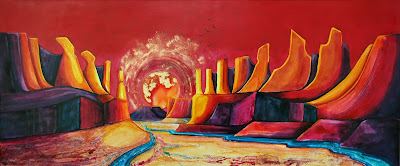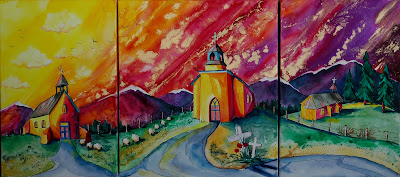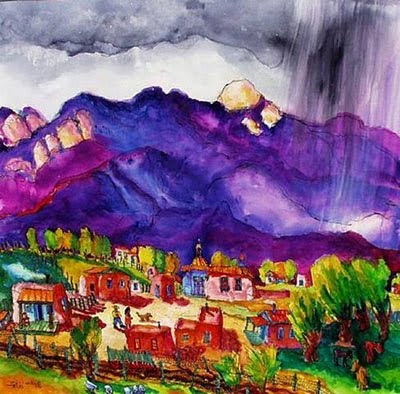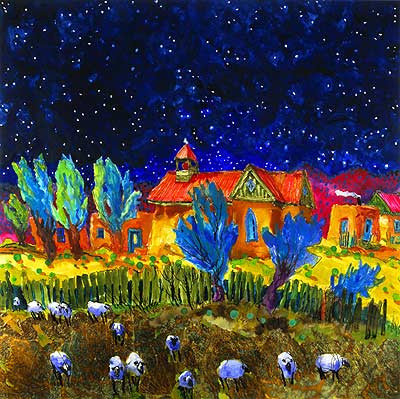The mania of artist trading cards hit about the same time scrapbooking took over a large section of some art supply stores. I have this folder of things to put in a scrapbook but I have never done anything with i and certainly not in the grand manner of the hobby of scrapbooks. I filed artist trading cards in that same "useless information" niche in my brain. It didn't help that an "artist" I didn't like promoted them in our guild.
Artist trading cards are miniature works of art about the same size as baseball cards. The ATC movement (yes, it is called a movement) began in Switzerland in 1996 when it was promoted by M. Vänçi Stirnemann. The movement has been fanned by Hobby Lobby and other craft and art stores that sell supplies for ATC's which were once done with the scrap around your studio. There are now rules for ATC's.
 | ||||
| Artist Trading Card collage |
 | |
| ATC holder |
Actually I think they lost me on "rules." I am not much of a rule person and most artists I know don't like rules. We bristle when we have to read the guidelines for submission of entries to shows and exhibits. I briefly was considering ATC's when they were touting the swapping of them between artist friends but frankly I don't want cards from my artist friends; I want full sized pieces of their work.
Still there is some interesting whimsy exhibited in these cards and I wonder just how many of the artists have used an ATC as a study for larger works. So setting the rules aside can any of my artistic friends engaged in this site the creative growth aspects of this? Has it freed up your color choices? Let loose your compositional restraints? Opened a door to other themes in your serious work?



















